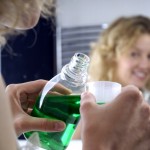
Maintaining good oral hygiene procedures during fixed appliance therapy is important for gingival health and to prevent the development of white spot lesions. While a good brushing technique is important mouthwashes are often recommended to help control plaque.
The aim of this review was to assess the effectiveness of mouthwashes in reducing plaque levels in patients undergoing fixed appliance treatment.
Methods
Searches were conducted in the PubMed/Medline, Embase, Cochrane, Scopus, Web of Science, Controlled Trials and OpenGrey databases. Controlled clinical studies conducted in patients with labial fixed appliances assessing the effects of mouthwashes on plaque score were considered. Two reviewers independently selected studies for inclusion and study quality assessed using a scoring system.
Results
- 15 studies (14 RCTs) involving a total of 497 patients were included.
- 11 were considered to be high quality and 4 of moderate quality.
- Sample sizes varied from 18-97.
- A range of mouthwashes was used; 8 studies used chlorhexidine; 2 AmF/SnF2; 2 Listerine®; and 1 each of sanguinaria; NaF; and octenidine.
- The quantity of mouthwash used ranged from 10-20 mls and there was also a wide variation in the frequency of their use from 3 times per day to once a day.
- Positive effects were reported for all mouthwashes.
Conclusions
The authors concluded: –
There is evidence of effectiveness of the use of oral mouthwashes in the control of cariogenic plaque in patients with fixed orthodontic appliances. The orthodontists may suggest the use of oral antiseptics in the oral hygiene of their patients as coadjuvent means to reduce cariogenic plaque.
Comments
While this review has searched a number of databases the majority of included studies are small with only 3 involving 50 or more patients. A quality scoring system has been used to assess quality, however Cochrane does not recommend this type of approach. There was marked heterogeneity between the studies with a range of different mouthwashes, quantities and frequency of use being tested. There was also variation in oral hygiene instructions and toothpaste use. As a result no meta-analysis was carried out and a brief qualitative summary of the main outcome measure presented.
This summary suggested that all the included mouthwashes reduced plaque levels but it is not clear whether this reduction was of clinical importance. In order to understand the effectiveness of mouthwashes for plaque control for patients undergoing fixed appliance therapy larger high quality randomised trials are needed.
Links
Original Review Protocol (Prospero database)
Pithon MM, Sant’Anna LI, Baião FC, Santos RL, Coqueiro RD, Maia LC. Assessment of the effectiveness of mouthwashes in reducing cariogenic biofilm in orthodontic patients: A systematic review. J Dent. 2015 Mar;43(3):297-308. doi: 10.1016/j.jdent.2014.12.010. Epub 2015 Jan 6. Review. PubMed PMID: 25572792.

Mouthwashes for orthodontic patients. http://t.co/DvCfM44oTx
New SR on effectiveness of mouthwashes in reducing plaque levels in patients undergoing fixed appliance treatment http://t.co/y0h7qYJRR3
Don’t miss – Mouthwashes and plaque control in orthodontic patients http://t.co/y0h7qYJRR3 #EBP